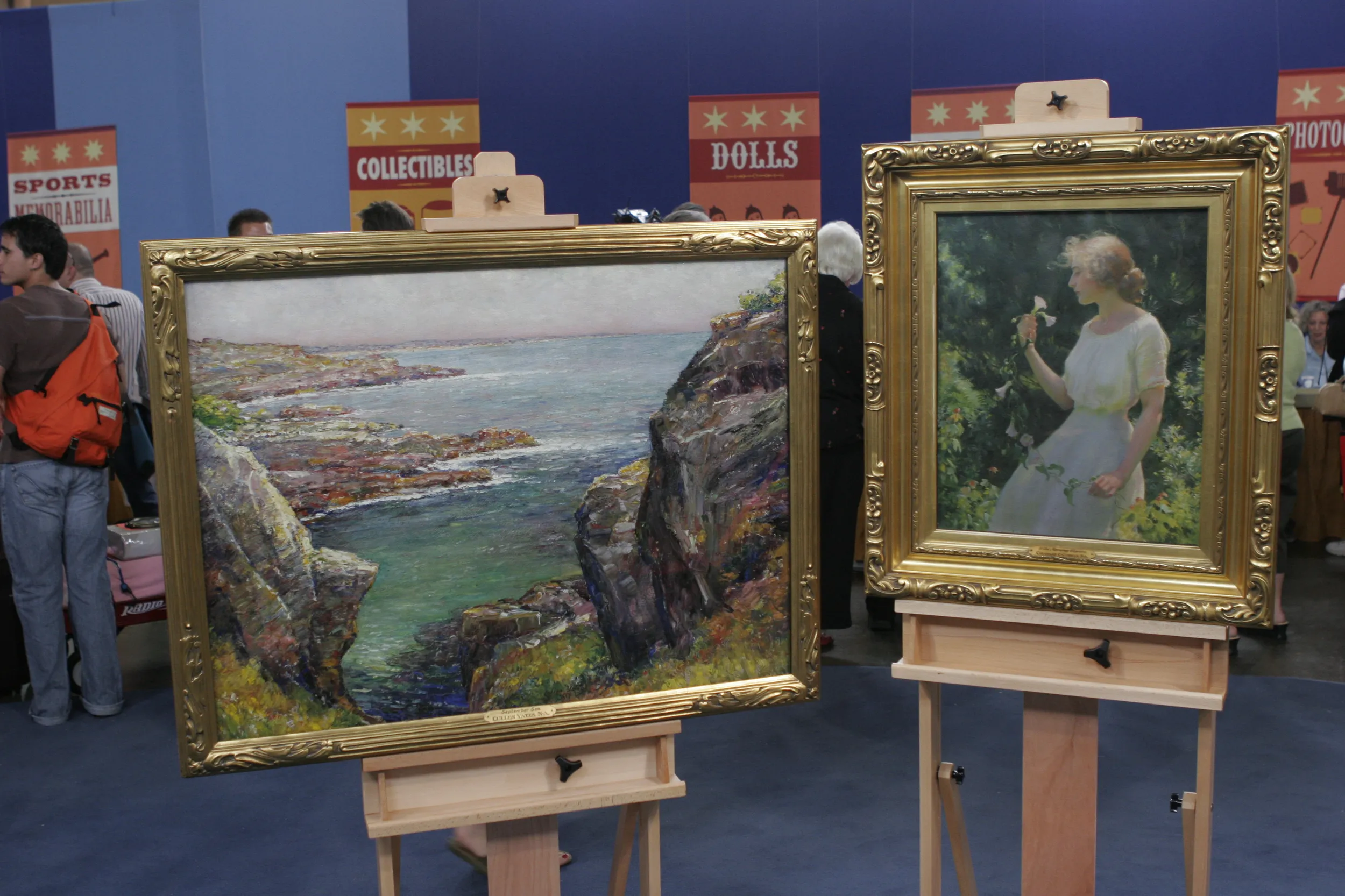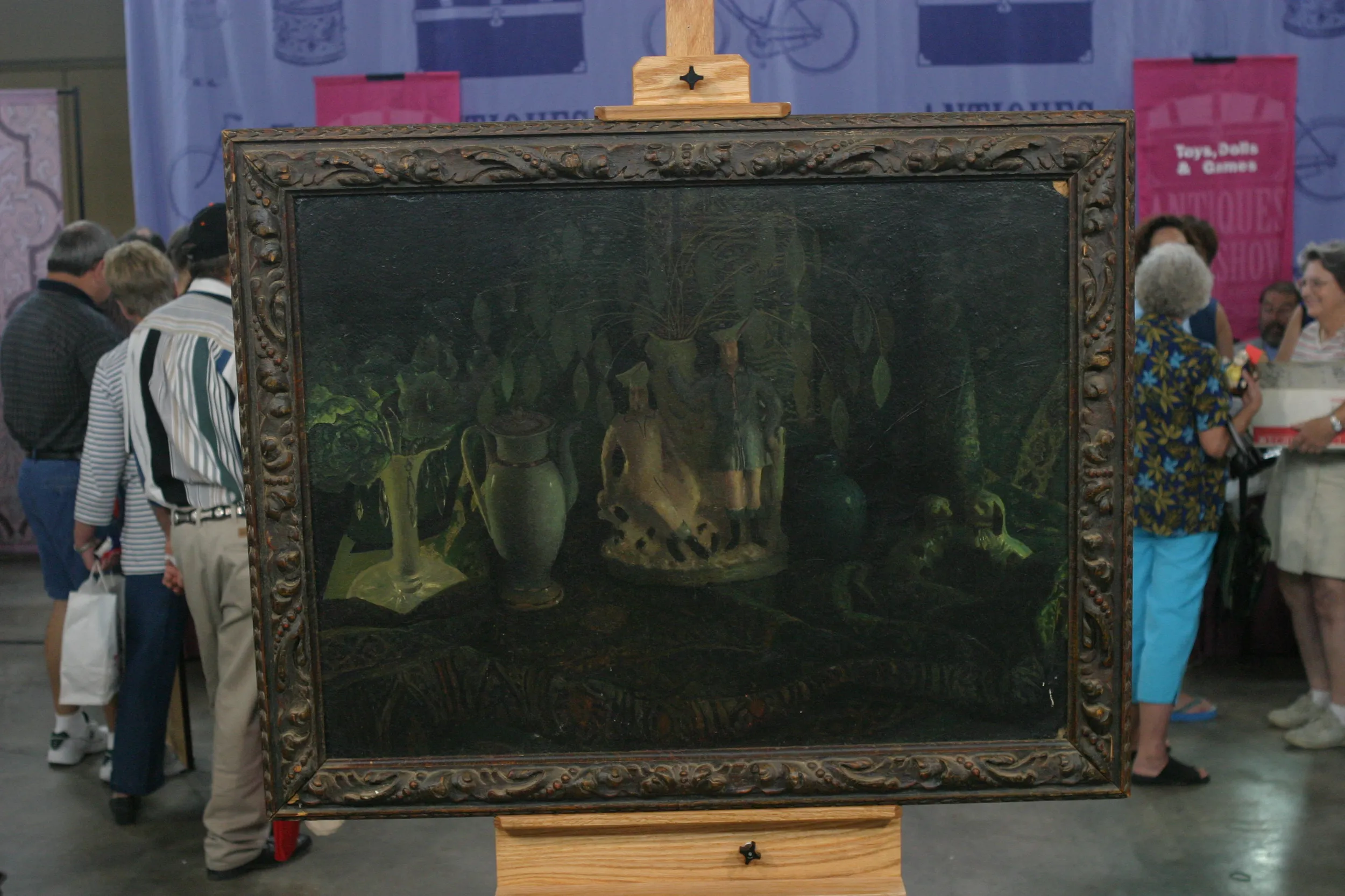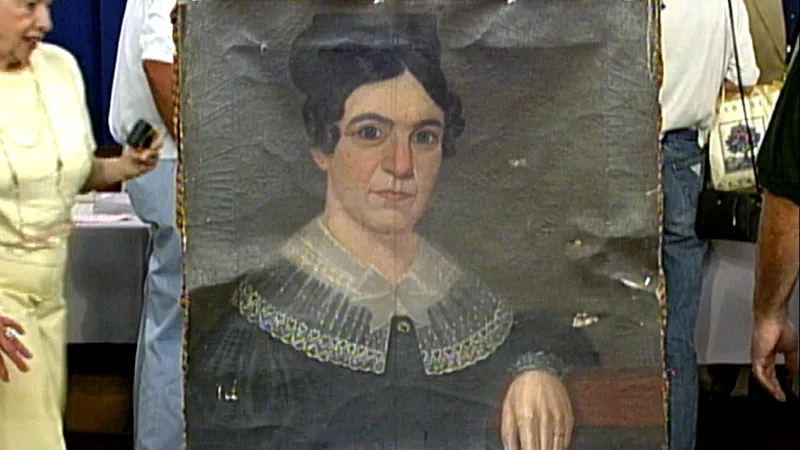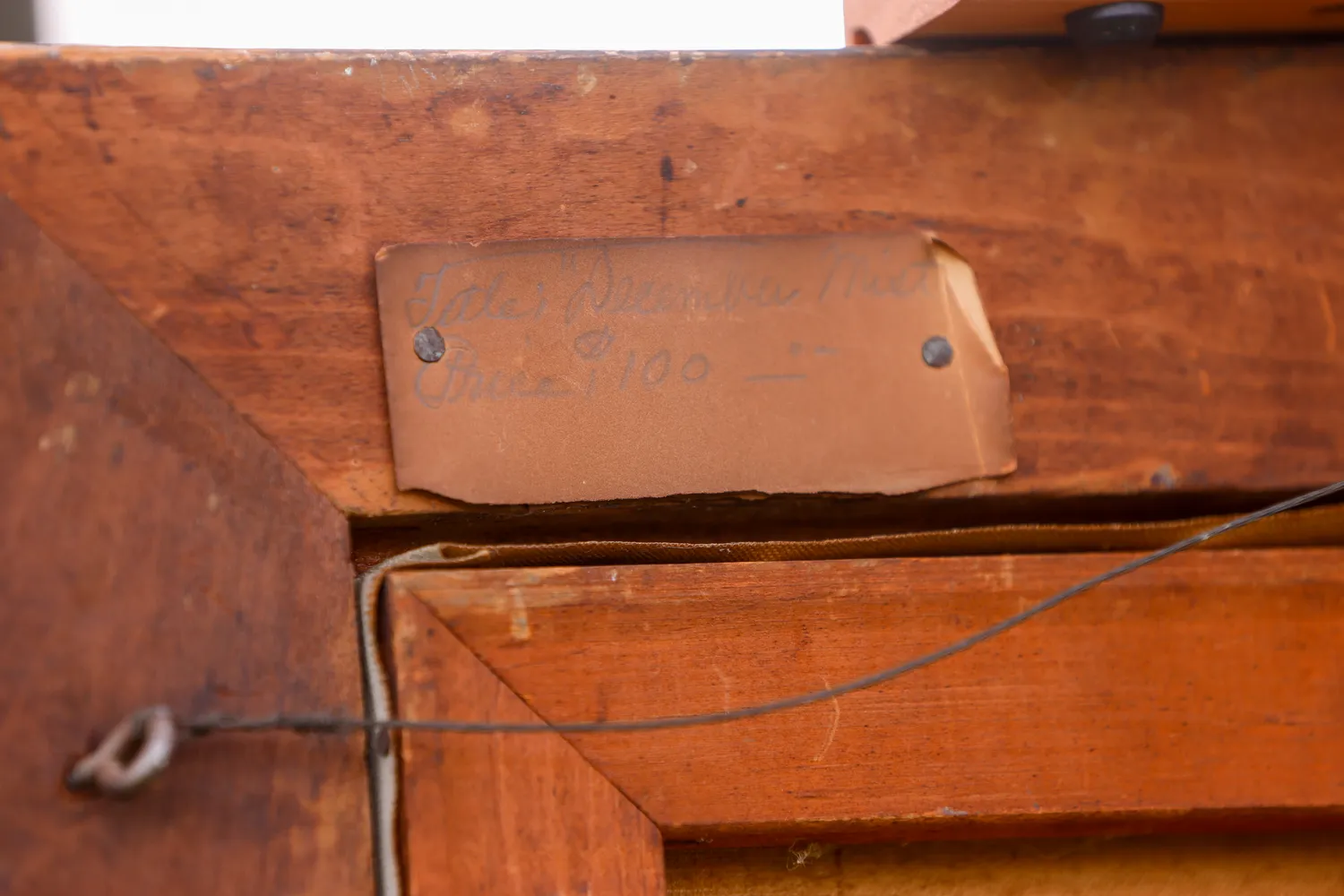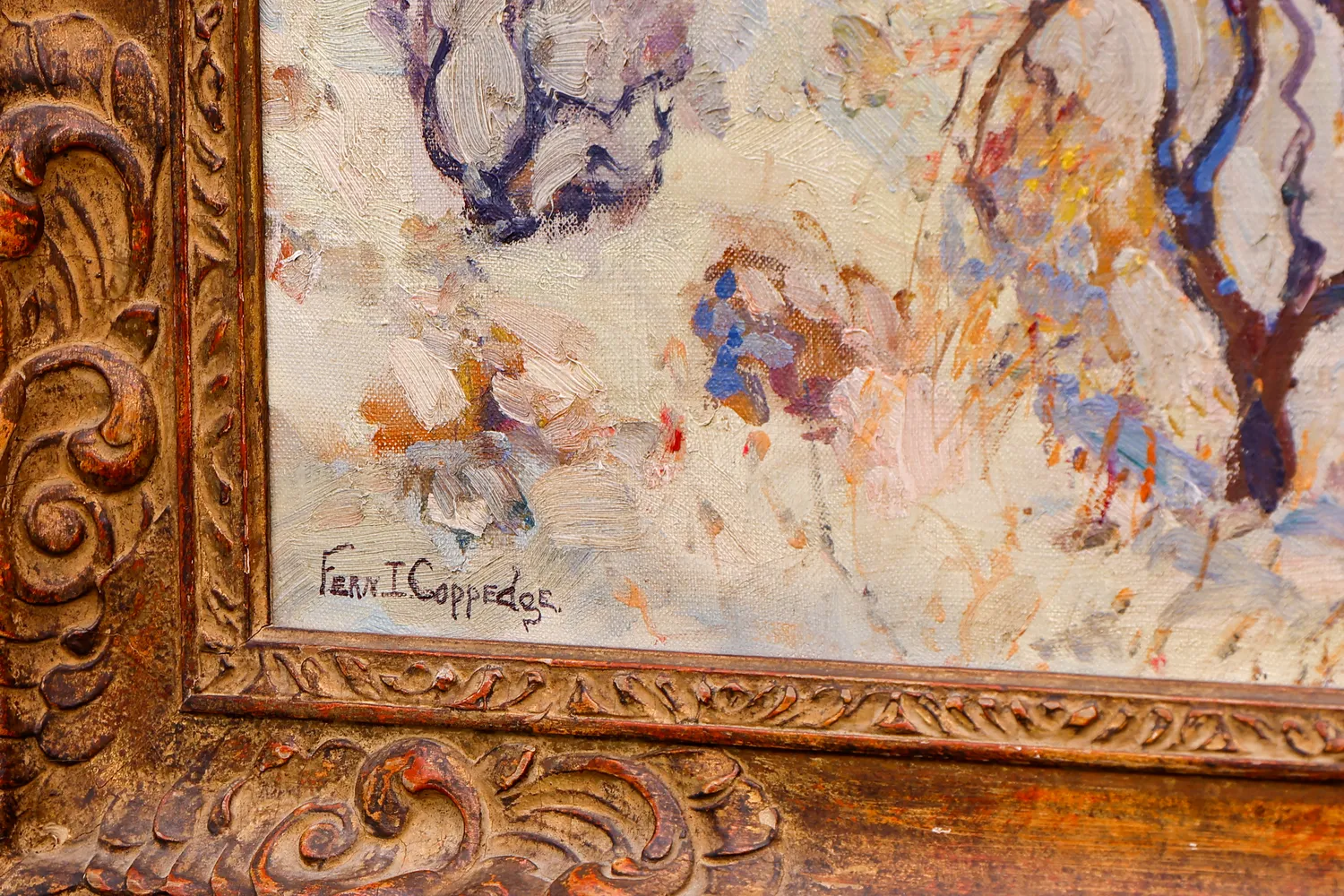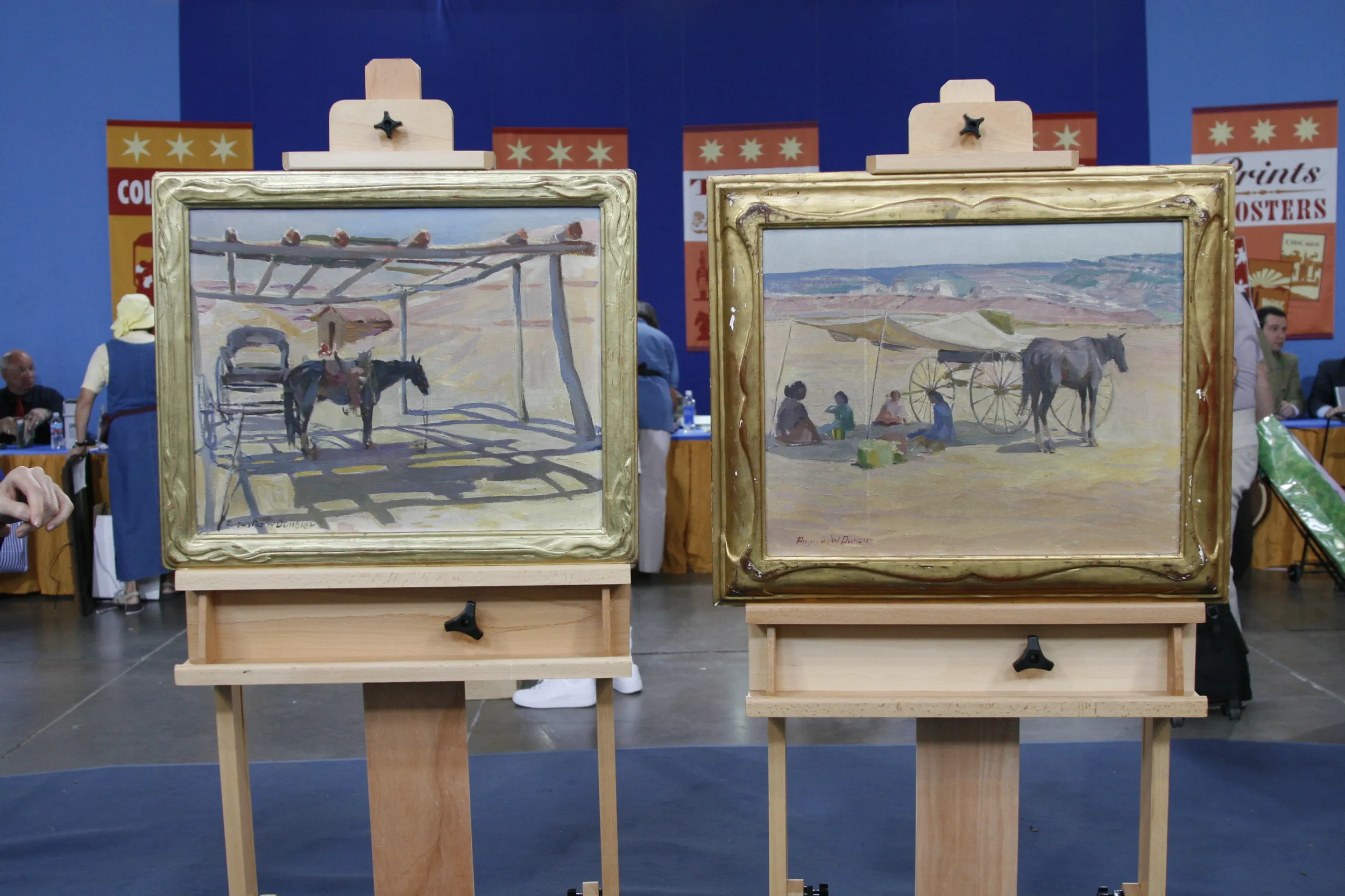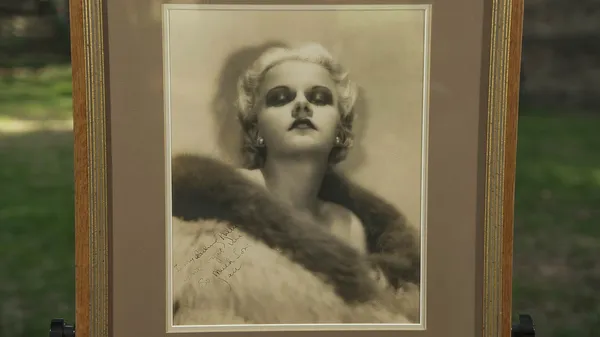GUEST: So I brought a painting that belonged to my grandparents. It hung in their home, it hung in my mother's, my parents' home, and it's been hanging in my living room for the past 20 years. I know it's Fern Coppedge.
APPRAISER: Mm-hmm.
GUEST: And, um, Lehigh Valley, Delaware Gap area is the scenes that inspired it. The painting had been purchased by my grandparents, my father's father, and we believe they purchased it at a auction or fundraiser for Lafayette College, which is also in Eastern Pennsylvania.
APPRAISER: I did notice a price tag and a t, with a title that says, uh, "December Mist," uh, "$100." Fern Coppedge is one of the best-known Pennsylvania Impressionists, so you have here one of her quintessential works.
GUEST: Wow.
APPRAISER: Um, and when I say quintessential, I think it has everything that you want in a, in a Fern Coppedge.
GUEST: Oh, really? 'Cause I always thought it was dark, so...
APPRAISER: I think it's gotten a little dark with age.
GUEST (laughs): Okay.
APPRAISER: This would have been painted probably early o, early on when she came to Pennsylvania. So she came to Pennsylvania in 1920 to live and work in Bucks County and in Philadelphia. Before that, she studied at the Art Institute of Chicago and at the Art Students League with, uh, William Merritt Chase...
GUEST: Oh, wow.
APPRAISER: ...in New York, and then at the Pennsylvania Academy of Fine Arts with Daniel Garber. Approximately when do you think the painting was, was purchased?
GUEST: Probably 1920s, 1930s.
APPRAISER: And it does make sense with Fern Coppedge's own movements into, uh, Pennsylvania, because she actually started to settle down in Pennsylvania i, as of 1920. She was a lover of light and color. Given the fact that this is, painting is from 1920, that makes it ba, basically about 100 years old.
GUEST: Yes.
APPRAISER: And there's a lot of dirt, uh, that has settled into the paint. But even through that dirt, we can see the amount of attention she paid to color. When we look at the snow, especially, she saw so many different colors within the snow that would change with the time of day. She took one step towards Fauvism, expressing
the emotions, colors expressing the impressions, as well. And I think if the painting was cleaned, a lot of these blues would just pop out dramatically.
GUEST: Oh, really? Uh-huh.
APPRAISER: And the purples would also pop out. This painting is oil on canvas. So I assume it's the original frame. I do think it's the original frame, yes.
GUEST: Mm-hmm.
APPRAISER: This is the typical kind of subject matter that she loved. She loved the snow. She would even go out and paint in a, like, a, in a bear skin. She would paint en plein air, which means paint outside.
GUEST: Right.
APPRAISER: She was very much into the reality of the moment. The group of, uh, female artists with whom she was associated was called the Philadelphia Ten. It was a group of progressive fe, uh, female artists who basically supported each other in the otherwise kind of boys' club of artists during that time. Uh, they would exhibit together and work together from the 1920s into the 1930s. She exhibited widely during, during the time, and she was respected even though women artists didn't have as much visibility, I would say, as some of the major male artists like, uh, Redfield and Garber, who was her teacher and, and one of her, uh, closest artist friends. It really celebrates everything that she saw. She would even tie her canvases up in between trees, uh, to...
GUEST: Oh, really?
APPRAISER: Yeah.
GUEST: Wow.
APPRAISER: So she was intrepid. Her market has been doing very well recently.
GUEST: Oh.
APPRAISER: I would insure this for no less than $120,000.
GUEST: Oh, really? (laughs) Wow, wow. Okay, that's, that's worth insuring. (laughs) I was not expecting that. Thank you, Grandpa. (both laugh)


